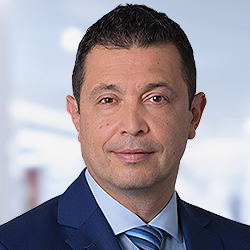Overview
Fund Tagline
Tap Into the Opportunity and Long-Term Growth Potential of U.S. Small Cap Companies
Fund Description
View important disclosureProduct Facts
| Ticker Symbol | IVCSX |
| CUSIP | 92913T430 |
| Inception Date | December 27, 1996 |
| Dividends Paid | Semi-Annually |
- Invests primarily in stocks of smaller, U.S. companies which fall in the range of the Russell 2000 Index.
- Seeks to maximize idiosyncratic risk with no static style or factor biases.
- Applies machine learning models to evaluate financial, fundamental, technical and governance characteristics of over 2,000 companies to form a deep, holistic view of each stock (without emotional biases).
- Team has more than a decade working together, focused on delivering consistent outperformance with low correlation to most investment strategies.
The Fund seeks growth of capital primarily through investment in a diversified portfolio of common stock of companies with smaller market capitalizations.
- Invests primarily in stocks of smaller, U.S. companies which fall in the range of the Russell 2000 Index.
- Seeks to maximize idiosyncratic risk with no static style or factor biases.
- Applies machine learning models to evaluate financial, fundamental, technical and governance characteristics of over 2,000 companies to form a deep, holistic view of each stock (without emotional biases).
- Team has more than a decade working together, focused on delivering consistent outperformance with low correlation to most investment strategies.
The Fund seeks growth of capital primarily through investment in a diversified portfolio of common stock of companies with smaller market capitalizations.
Performance
Average Annual Total Returns %
As of October 31, 2025
As of September 30, 2025
| Most Recent Month End | YTD | 1 YR | 3 YR | 5 YR | 10 YR | Expense Ratios | |
|---|---|---|---|---|---|---|---|
| Gross | Net | ||||||
| Net Asset Value | +6.82 | +10.11 | +11.75 | +11.18 | +8.08 | 0.92% | 0.86% |
| With Sales Charge | +6.82 | +10.11 | +11.75 | +11.18 | +8.08 | ||
| Net Asset Value | +6.52 | +7.33 | +15.80 | +11.74 | +8.60 | 0.92% | 0.86% |
| With Sales Charge | +6.52 | +7.33 | +15.80 | +11.74 | +8.60 | ||
| Russell 2000 Index | +12.39 | +14.41 | +11.94 | +11.50 | +9.36 | — | — |
| Russell 2000 Index | +10.39 | +10.76 | +15.21 | +11.56 | +9.77 | — | — |
Inception Date - Class I: December 27, 1996
Current Maximum Sales Charge: 0.00%
The performance quoted represents past performance and does not guarantee future results. Current performance may be lower or higher than the performance information shown. The investment return and principal value of an investment in the Portfolio will fluctuate, so that your shares, when redeemed, may be worth more or less than their original cost. See above "Average Annual Total Returns %" for performance information current to the most recent month-end.
Returns for the other share classes will vary due to different charges and expenses. Performance assumes reinvestment of distributions and does not account for taxes.
Total investment return at net asset value has been calculated assuming a purchase at net asset value at the beginning of the period and a sale at net asset value at the end of the period; and assumes reinvestment of dividends, capital gain distributions and return of capital distributions/allocations, if any, in accordance with the provisions of the dividend reinvestment plan. Net asset value equals total Fund assets net of Fund expenses such as operating costs and management fees. Total investment return at net asset value is not annualized for periods less than one year.
The Russell 2000 Index is an unmanaged index that measures the performance of securities of smaller U.S. companies. It is a small-cap stock market index that makes up the smallest 2,000 stocks in the Russell 3000 Index.
Past performance does not guarantee future results.
Calendar Year Returns %
Past performance is no guarantee of future results. Returns are shown in %. These figures are for the year ended December 31 of each year. They do not reflect sales charges and would be lower if they did. The bar chart above shows the Fund's annual returns and long-term performance, and illustrates the variability of the Fund’s returns.
Growth of a $10,000 Investment
For the period 11/30/2015 through 10/31/2025
Ending Value: $21,740.00
The performance quoted in the "Growth of a $10,000 Investment" chart represents past performance. Performance shown is without sales charges; had sales charges been deducted, performance would have been less. Ending value includes reinvestment of distributions.
Average Annual Total Returns %
As of October 31, 2025
As of September 30, 2025
| Most Recent Month End | YTD | 1 YR | 3 YR | 5 YR | 10 YR | Expense Ratios | |
|---|---|---|---|---|---|---|---|
| Gross | Net | ||||||
| Net Asset Value | +6.82 | +10.11 | +11.75 | +11.18 | +8.08 | 0.92% | 0.86% |
| With Sales Charge | +6.82 | +10.11 | +11.75 | +11.18 | +8.08 | ||
| Net Asset Value | +6.52 | +7.33 | +15.80 | +11.74 | +8.60 | 0.92% | 0.86% |
| With Sales Charge | +6.52 | +7.33 | +15.80 | +11.74 | +8.60 | ||
| Russell 2000 Index | +12.39 | +14.41 | +11.94 | +11.50 | +9.36 | — | — |
| Russell 2000 Index | +10.39 | +10.76 | +15.21 | +11.56 | +9.77 | — | — |
Inception Date - Class I: December 27, 1996
Current Maximum Sales Charge: 0.00%
The performance quoted represents past performance and does not guarantee future results. Current performance may be lower or higher than the performance information shown. The investment return and principal value of an investment in the Portfolio will fluctuate, so that your shares, when redeemed, may be worth more or less than their original cost. See above "Average Annual Total Returns %" for performance information current to the most recent month-end.
Returns for the other share classes will vary due to different charges and expenses. Performance assumes reinvestment of distributions and does not account for taxes.
Total investment return at net asset value has been calculated assuming a purchase at net asset value at the beginning of the period and a sale at net asset value at the end of the period; and assumes reinvestment of dividends, capital gain distributions and return of capital distributions/allocations, if any, in accordance with the provisions of the dividend reinvestment plan. Net asset value equals total Fund assets net of Fund expenses such as operating costs and management fees. Total investment return at net asset value is not annualized for periods less than one year.
The Russell 2000 Index is an unmanaged index that measures the performance of securities of smaller U.S. companies. It is a small-cap stock market index that makes up the smallest 2,000 stocks in the Russell 3000 Index.
Past performance does not guarantee future results.
Calendar Year Returns %
Past performance is no guarantee of future results. Returns are shown in %. These figures are for the year ended December 31 of each year. They do not reflect sales charges and would be lower if they did. The bar chart above shows the Fund's annual returns and long-term performance, and illustrates the variability of the Fund’s returns.
Growth of a $10,000 Investment
For the period 11/30/2015 through 10/31/2025
Ending Value: $21,740.00
The performance quoted in the "Growth of a $10,000 Investment" chart represents past performance. Performance shown is without sales charges; had sales charges been deducted, performance would have been less. Ending value includes reinvestment of distributions.
Portfolio
Portfolio Statistics
As of October 31, 2025
| Net Assets millions Net Assets The per-share dollar amount of the fund, calculated by dividing the total value of all the securities in its portfolio, less any liabilities, by the number of fund shares outstanding. | $197.8 |
| Number of Holdings Number of Holdings Number of Holdings in the investment. | 170 |
| EPS Growth (3-5 Year Estimate) EPS Growth (3-5 Year Estimate) The portion of a company's profit allocated to each outstanding share of common stock. EPS growth serves as an indicator of a company's profitability. | 12.54 |
| Active Share Active Share Active Share is a measure of the percentage of stock holdings in a manager's portfolio that differ from the benchmark index. | 87.12 |
| Price to Cash Flow Price to Cash Flow The ratio of a stock’s price to its cash flow per share. The price-to-cash flow ratio is an indicator of a stock’s valuation | 14.96 |
| ROA % ROA ROA is an indicator of how profitable a company is relative to its total assets. ROA gives an idea as to how efficient management is at using its assets to generate earnings. | 1.89 |
| Total |
Top Holdings
As of October 31, 2025
| Flowserve Corporation | 2.67 |
| Credo Technology Group Holding Ltd. | 1.74 |
| Alignment Healthcare, Inc. | 1.31 |
| Mueller Water Products, Inc. | 1.30 |
| Guardant Health, Inc. | 1.30 |
| Applied Industrial Technologies, Inc. | 1.28 |
| Rambus Inc. | 1.27 |
| HealthEquity Inc | 1.23 |
| Tri Pointe Homes, Inc. | 1.21 |
| Hancock Whitney Corporation | 1.20 |
| Total | #,###.2 |
Portfolio Composition
As of October 31, 2025
| Cash | 0.43 |
| Mutual Funds | 1.47 |
| EM Equity | 3.91 |
| Foreign Stocks | 1.61 |
| US Common Stocks | 92.58 |
| Total | #,###.2 |
Sector Weightings
As of October 31, 2025
| INFORMATION TECHNOLOGY | 19.46 |
| FINANCIALS | 19.42 |
| HEALTH CARE | 17.46 |
| INDUSTRIALS | 16.03 |
| REAL ESTATE | 6.62 |
| CONSUMER DISCRETIONARY | 5.86 |
| ENERGY | 4.07 |
| UTILITIES | 4.01 |
| COMMUNICATION SERVICES | 3.27 |
| MATERIALS | 3.22 |
| CONSUMER STAPLES | 0.58 |
| Total | #,###.2 |
Portfolio Statistics
As of October 31, 2025
| Net Assets millions Net Assets The per-share dollar amount of the fund, calculated by dividing the total value of all the securities in its portfolio, less any liabilities, by the number of fund shares outstanding. | $197.8 |
| Number of Holdings Number of Holdings Number of Holdings in the investment. | 170 |
| EPS Growth (3-5 Year Estimate) EPS Growth (3-5 Year Estimate) The portion of a company's profit allocated to each outstanding share of common stock. EPS growth serves as an indicator of a company's profitability. | 12.54 |
| Active Share Active Share Active Share is a measure of the percentage of stock holdings in a manager's portfolio that differ from the benchmark index. | 87.12 |
| Price to Cash Flow Price to Cash Flow The ratio of a stock’s price to its cash flow per share. The price-to-cash flow ratio is an indicator of a stock’s valuation | 14.96 |
| ROA % ROA ROA is an indicator of how profitable a company is relative to its total assets. ROA gives an idea as to how efficient management is at using its assets to generate earnings. | 1.89 |
| Total |
Top Holdings
As of October 31, 2025
| Flowserve Corporation | 2.67 |
| Credo Technology Group Holding Ltd. | 1.74 |
| Alignment Healthcare, Inc. | 1.31 |
| Mueller Water Products, Inc. | 1.30 |
| Guardant Health, Inc. | 1.30 |
| Applied Industrial Technologies, Inc. | 1.28 |
| Rambus Inc. | 1.27 |
| HealthEquity Inc | 1.23 |
| Tri Pointe Homes, Inc. | 1.21 |
| Hancock Whitney Corporation | 1.20 |
| Total | #,###.2 |
Portfolio Composition
As of October 31, 2025
| Cash | 0.43 |
| Mutual Funds | 1.47 |
| EM Equity | 3.91 |
| Foreign Stocks | 1.61 |
| US Common Stocks | 92.58 |
| Total | #,###.2 |
Sector Weightings
As of October 31, 2025
| INFORMATION TECHNOLOGY | 19.46 |
| FINANCIALS | 19.42 |
| HEALTH CARE | 17.46 |
| INDUSTRIALS | 16.03 |
| REAL ESTATE | 6.62 |
| CONSUMER DISCRETIONARY | 5.86 |
| ENERGY | 4.07 |
| UTILITIES | 4.01 |
| COMMUNICATION SERVICES | 3.27 |
| MATERIALS | 3.22 |
| CONSUMER STAPLES | 0.58 |
| Total | #,###.2 |
Information provided is not a recommendation to buy or sell any security. Portfolio data is subject to daily change.
Distributions
Payment Frequency: Semi-Annually
| Distributions | Ex-Date
Ex-Date Date on which a stock begins trading without the benefit of the dividend. Typically, a stock’s price moves up by the dollar amount of the dividend as the ex-dividend date approaches, then falls by the amount of the dividend after that date. | Payable Date
Payable Date Date on which a declared stock dividend or a bond interest payment is scheduled to be paid. | Record Date
Record Date Date on which a shareholder must officially own shares in order to be entitled to a dividend. After the date of record, the stock is said to be ex-dividend. | Amount |
|---|---|---|---|---|
| Income Dividend | 05/09/2025 | 05/08/2025 | 05/07/2025 | $0.170200 |
| Short-Term Capital Gain | 05/09/2025 | 05/08/2025 | 05/07/2025 | $2.178700 |
| Totals: $2.348900 | ||||
Income Dividend: Payout to shareholders of interest, dividends, or other income received by the Fund, net of operating expenses. By law, all such income must be distributed to shareholders, who may choose to take the money in cash or reinvest it in more shares of the Fund.
Short-Term Capital Gain: The profit realized from the sale of securities held for less than one year.
Long-Term Capital Gain: Gain on the sale of a security where the holding period was 12 months or more and the profit was subject to the long-term capital gains tax.
Investment Team
Disclosures
Principal Risks
All investing involves risks of fluctuating prices and the uncertainties of rates of return and yield inherent in investing. You could lose money on your investment and any of the following risks, among others, could affect investment performance. The following principal risks are presented in alphabetical order which does not imply order of importance or likelihood: Company; Currency; Derivative Instruments; Environmental, Social, and Governance (Equity); Foreign (Non-U.S.) Investments; Growth Investing; Investment Model; Liquidity; Market; Market Disruption and Geopolitical; Other Investment Companies; Real Estate Companies and Real Estate Investment Trusts; Securities Lending; Small-Capitalization Company; Value Investing. Investors should consult the Portfolio’s Prospectus and Statement of Additional Information for a more detailed discussion of the Portfolio’s risks.
Artificial intelligence (AI) including natural language processing, machine learning, and other forms of AI may pose inherent risks, including but not limited to: issues with data privacy, intellectual property, consumer protection, and anti-discrimination laws; ethics and transparency concerns; information security issues; the potential for unfair bias and discrimination; quality and accuracy of inputs and outputs; technical failures and potential misuse. Reliance on information produced using AI-based technology and tools should factor in these risks.
The Voya Machine Intelligence (VMI) team employs a proprietary machine learning approach to identify and exploit persistent patterns in company data. The approach leverages (non-linear) machine learning ("ML") models for fundamental analysis. The ML models employed do not utilize generative AI algorithms.
An investment in the Portfolio is not a bank deposit and is not insured or guaranteed by the Federal Deposit Insurance Corporation, the Federal Reserve Board or any other government agency.
The fund discussed may be available to you as part of your employer sponsored retirement plan. There may be additional plan level fees resulting in personal performance that varies from stated performance. Please call your benefits office for more information.
Variable annuities and group annuities are long-term investments designed for retirement purposes. If withdrawals are taken prior to age 59½, an IRS 10% premature distribution penalty tax may apply. Money taken from the annuity will be taxed as ordinary income in the year the money is distributed. An annuity does not provide any additional tax deferral benefit, as tax deferral is provided by the plan. Annuities may be subject to additional fees and expenses to which other tax-qualified funding vehicles may not be subject. However, an annuity does provide other features and benefits, such as lifetime income payments and death benefits, which may be valuable to you. All guarantees are based on the financial strength and claims paying ability of the issuing insurance company, who is solely responsible for all obligations under its policies. Insurance products, annuities and funding agreements issued by Voya Retirement Insurance and Annuity Company (“VRIAC”), One Orange Way, Windsor, CT 06095, which is solely responsible for meeting its obligations. Plan administrative services provided by VRIAC or Voya Institutional Plan Services, LLC (“VIPS”). Securities distributed by or offered through Voya Financial Partners, LLC (“VFP”) (member SIPC) or other broker-dealers with which it has a selling agreement. Only Voya Retirement Insurance and Annuity Company is admitted and can issue products in the state of New York.



